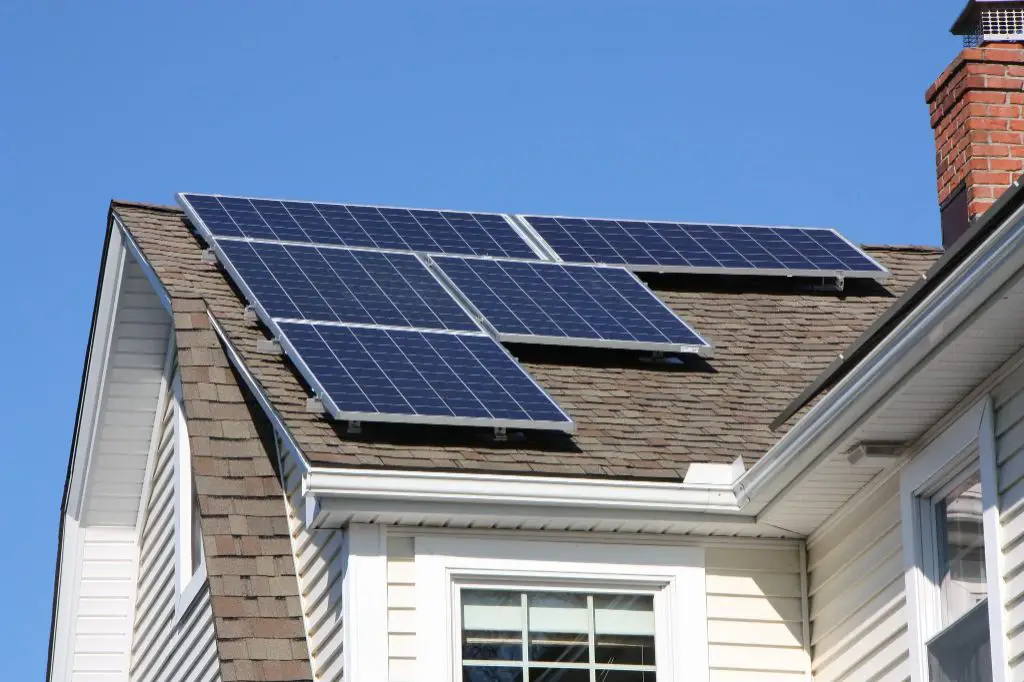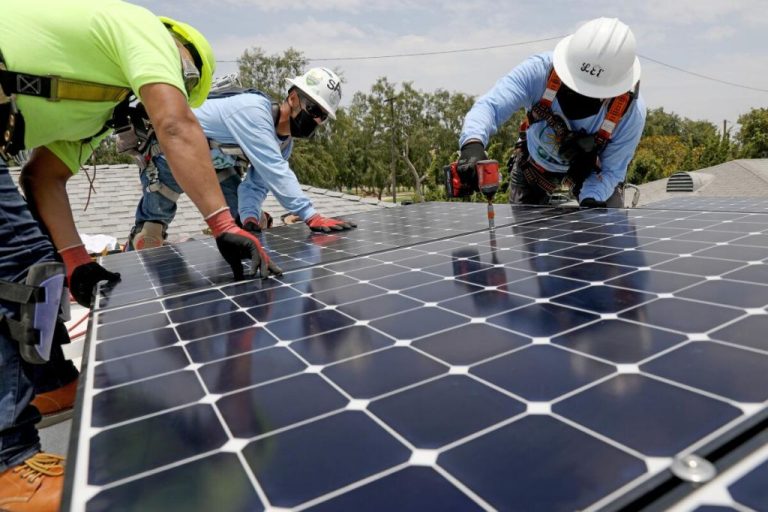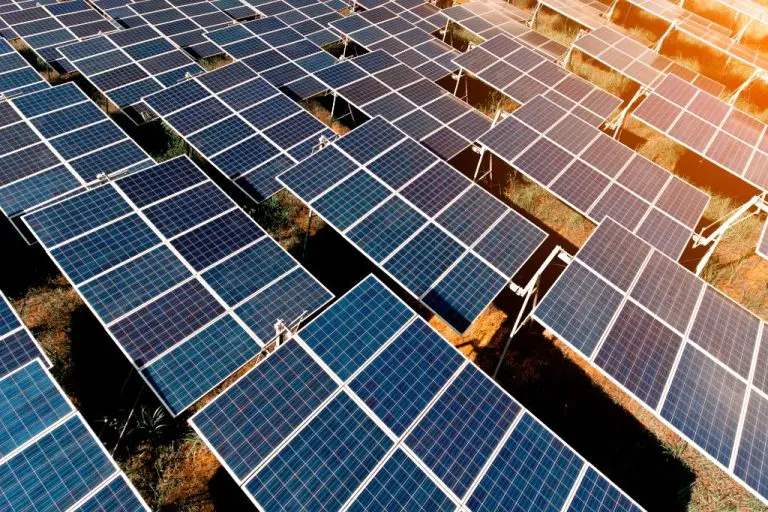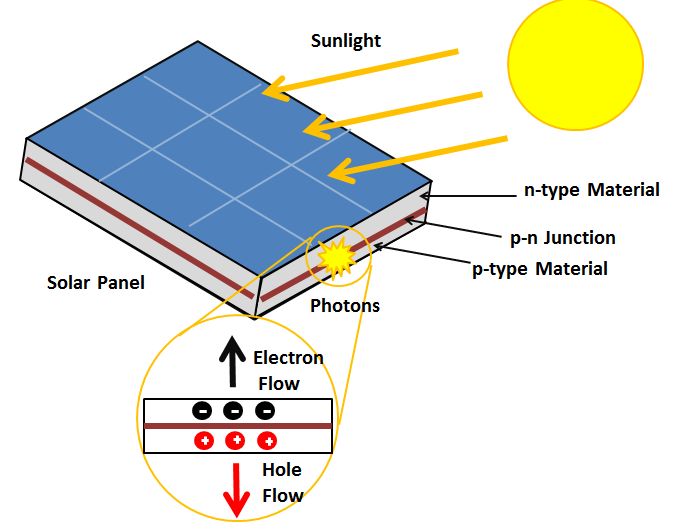How Much Power Does A 16Kw Solar System Produce?
Solar power systems are an increasingly popular way for homeowners and businesses to generate their own electricity. At the heart of these systems are photovoltaic solar panels, which convert sunlight directly into electricity.
Solar panels are wired together to form solar arrays, which are mounted on rooftops or ground installations. The direct current (DC) electricity generated by the solar array flows to an inverter, which converts it into alternating current (AC) that can be used to power home appliances and lights.
Solar energy systems come in different sizes, measured in kilowatts (kW). The size of a solar system should be matched to your electricity needs – larger families and bigger homes require bigger systems to meet their energy demand.
What is a 16kW Solar System?
A 16kW solar system refers to a residential solar panel system that has a maximum capacity of 16 kilowatts (kW). The kW rating specifies the maximum amount of direct current (DC) power the solar panels can produce under optimal conditions. The solar inverters then convert the DC power into usable alternating current (AC) electricity for the home.
A 16kW solar system is considered an average or medium-sized residential system. Most homes require between 5-10kW of capacity to offset their electricity usage. Larger homes with increased energy needs may require a system around 16kW in size to maximize savings on their utility bills. So a 16kW system is well-suited for larger homes with higher energy consumption. It can often offset most or all of the home’s electric needs.
How Solar Panels Work
Solar panels work through the photovoltaic effect, which is the process of converting sunlight directly into electricity. When sunlight hits the solar cells inside a solar panel, it knocks electrons loose from the atoms in the semiconductor material. The freed electrons flow through the panel as direct current electricity.
Specifically, solar panels contain photovoltaic cells made of semiconducting materials like silicon. When a photon from sunlight strikes the cell, its energy gets absorbed by the semiconductor, knocking loose an electron. The electrical circuit in the panel provides a path for the freed electron to flow and generates an electric current. This electricity can then be used to power electrical loads or fed back into the utility grid.
So in summary, solar panels convert the radiant energy from the sun into usable electrical energy through the photovoltaic effect. The key components that enable this energy conversion are the solar cells made of semiconducting material like silicon. Sunlight knocks electrons loose to create electricity that can be harnessed and used.
Factors That Determine Power Output
The amount of power a solar system produces depends on several key factors:
Panel wattage and efficiency – The wattage rating of the solar panels determines how much electricity they can generate at peak capacity. More efficient panels convert a greater percentage of sunlight into usable electricity.
Number of sunlight hours – The more hours of direct sunlight exposure the panels receive, the more electricity they can generate. Areas with consistently sunny weather will produce more solar power.
Geographic location and weather – Solar panel output varies based on location and local weather patterns. Panels in sunnier, southern regions will produce more energy than those in cloudier northern areas. Seasonal changes and temperature also impact production.
Average Power Output
When looking at the power output of a solar panel system, it’s important to consider the typical kWh per kW of capacity. This helps provide a benchmark for estimating the annual production you can expect.
For a residential solar system, the average is around 1,300 to 1,500 kWh per kW per year. This factors in real-world conditions like weather, temperature, shading, and equipment performance.
Given those numbers, a 16 kW solar system would be expected to produce between 20,800 kWh and 24,000 kWh annually. This amount can offset a significant portion of an average home’s electricity usage over the year.
Of course, the actual output depends on your specific location and system design. But those kWh per kW figures offer a reasonable ballpark estimate to help determine the potential production from a system this size.
Estimating the Output of a 16kW System
To estimate the output of a 16kW solar system, we need to consider the location, amount of sunlight hours, and solar panel efficiency. Assuming this hypothetical system is located in Phoenix, Arizona which averages 5.7 sun hours per day we can make the following calculations:
With a 16kW system size and 270 watts per panel (a standard output), you will need around 60 panels (16,000W / 270W per panel = 59.259 panels). With 5.7 daily sun hours, 16kW system capacity, and 270W panels, the estimated daily output would be:
16kW capacity x 5.7 sun hours per day = 91.2kWh per day
Over one year with average sun hours, the estimated annual production of a 16kW system in Phoenix would be:
91.2 kWh x 365 days = 33,288 kWh
So in Phoenix, a properly designed 16kW solar system can be expected to produce around 33,288 kWh per year. Actual output will vary based on panel efficiency, direction, shading and local weather patterns. But this provides a reasonable estimate to use when calculating the potential financial return on investment of installing a 16kW residential solar system.
Maximizing the Power Production
There are several factors that can help maximize the amount of power generated by a 16kW solar system after it is installed.
Proper panel placement and angles are critical. In the northern hemisphere, panels should face south, and in the southern hemisphere, they should face north. The angle of the panels should be equal to your latitude to optimize exposure to the sun. Adjusting the angles seasonally can also increase efficiency.
Keep panels clean and clear of any obstructions like leaves or snow that may cause shading. Regularly inspect the system and make any repairs needed. Replace any broken or underperforming panels.
Using energy storage like batteries allows you to store excess solar power generated during the day for use at night. With enough storage capacity, you can significantly increase self-consumption of the solar power produced.
Adding more panels in the future is another way to increase the total power output as your needs change. With a 16kW system already in place, expanding the system is relatively straightforward.
Taking advantage of net metering and selling excess power back to the grid can maximize the financial benefits and offset nighttime usage.
Comparing 16kW to Other System Sizes
When considering solar, it’s important to weigh the power output versus system costs for different system sizes. A 16kW system offers more power output than smaller systems, but at a higher upfront cost. Larger systems above 16kW can generate even more power, but the marginal increase in production may not justify the added expense.
Smaller systems below 16kW, such as a 5kW or 10kW system, cost less upfront but produce less energy. These smaller systems may make sense for homes with less electrical demand. The sweet spot for many homes is a system in the 10-16kW range which provides substantial power production without the diminishing returns of extra large systems.
Larger systems above 16kW produce incrementally more energy, but are disproportionately more expensive. Going above 16kW often only makes sense for large properties with extensive electrical needs. While a 20kW system generates around 25% more power than a 16kW system, the costs are typically much greater than 25% more. Carefully evaluating your home’s electricity use can determine if a 16kW system hits the right balance, or if a larger system is warranted.
Financial Benefits of Going Solar

Installing a 16kW solar system can provide significant financial benefits for homeowners and businesses through reduced electricity costs. Here are some of the main financial incentives to go solar:
Electricity Bill Savings
One of the biggest financial benefits of installing solar panels is reducing your electricity bills. Since solar panels produce electricity directly from sunlight, you’ll rely much less on utility-provided electricity from the grid. A 16kW system could potentially zero out your entire electric bill if sized properly for your usage and exposure. Any excess solar electricity produced can be sold back to the utility through net metering.
Payback Period
The upfront cost of a 16kW solar system would likely be around $30,000-$40,000. With incentives and electricity savings, the system would pay for itself within 5-7 years. After that payback period, the system would provide 20+ more years of free electricity. That’s an excellent return on investment.
Incentives and Rebates
There are federal, state, and local incentives that can reduce the upfront cost of going solar. These include:
– Federal Solar Investment Tax Credit – 26% of system cost back as a tax credit
– State/local rebates and tax credits
– Solar Renewable Energy Certificates (SRECs)
– Net metering payments from utilities
Check available incentives in your area to maximize savings. The tax credits and other incentives can potentially cover 30% or more of the initial solar installation cost.
Conclusion
In summary, a 16kW solar panel system can produce an average of around 20,000 to 24,000 kWh per year depending on your location and specific system setup. This is enough electricity to fully power a typical home, with potential excess energy that can be sold back to the grid. The key factors determining power output are solar irradiance and temperature at your site location, panel efficiency and orientation, inverter efficiency losses, and overall system design.
To maximize production from a 16kW system, options include high efficiency panel models, optimal tilt and azimuth angles, string inverter vs. microinverter technology, and regular maintenance/monitoring. Compared to smaller systems, 16kW provides greater energy offset and potentially faster payback on investment. Tax credits, rebates, and net metering programs can also improve the return for residential solar owners.
For further reading, here are some additional resources on solar system sizing and performance:
- EnergySage Solar Calculator: https://www.energysage.com/solar/calculator
- Energy.gov Homeowner’s Guide to Going Solar: https://www.energy.gov/eere/solar/homeowners-guide-going-solar
- SEIA Solar Industry Research Data: https://www.seia.org/solar-industry-research-data







